I was in a meeting yesterday and the gentlemen from SWCD asked me:
“What should we recommend for our producers to plant as a cover crop after the wheat comes off?”
After running through a number of scenarios I determined that I’d better make sure I don’t confuse folks with too many ideas. So, here are a few scenarios that I hope you find useful.
If you want to scavenge Nitrogen and other nutrients, then a good choice would be Oats and Radishes mixed together. This mix generally should be planted at 1 1/2 bu Oats and 2-5# of Oilseed radish/acre. This mix also requires manure or around 40# N applied for it to be the ideal mix for this situation. This mixture will die in the winter and provide excellent winter annual weed control. Best planting time is Mid August…so you have plenty of time to get weeds killed and manure applied.
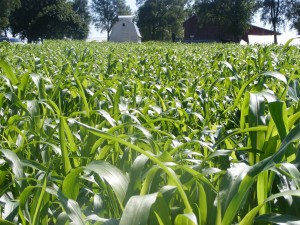
If you have livestock to feed, other great nutrient scavengers to plant after wheat are Sudangrass, Pearl Millet, or Sorghum-Sudangrass. These summer annual grasses require 100+# of N or equivalent manure. Tonnage of 4 1/2 tons Dry matter/acre have been common in northern Indiana following wheat the past three years. These grasses are excellent soil builders as well. Mycorrhizae fungus find the roots of these plants a very good place to multiply and build soil structure.
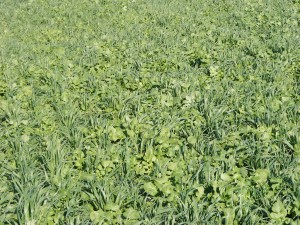
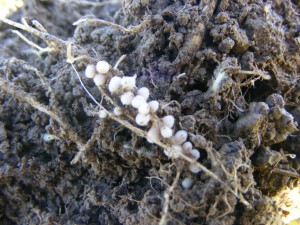
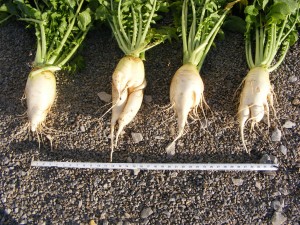
If you want to produce nitrogen and also scavenge nutrients as well, then an excellent choice will be Austrian Winter Peas mixed with Oilseed Radish . This mixture works very well without the addition of additional nitrogen. Count on the peas to deliver 60-120# of N and the oilseed radishes to keep most all of it in the top soil root zone. This mixture does a great job of controlling weeds. The radishes will die in the winter and the peas will “probably” die too…depending on your location, planting time of the mixture, and snow cover. If they overwinter they are easily killed in the spring.
If you are looking mainly for nitrogen production with a species that will winterkill, then choose cowpeas. The past few years cowpeas have been very expensive to plant. Be sure to check pricing and also be sure to inoculate the seed at planting time. Sow 60-100#/acre of cowpeas.
If you want the nitrogen production with a crop that will overwinter, then crimson clover is a top choice. Excellent new varieties have come on the market the past few years. Be sure to inoculate this seed as well. Sow 20-25#/acre of crimson clover.
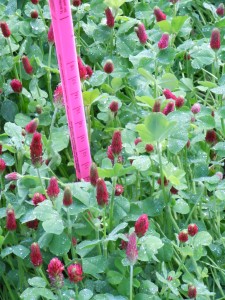
There are several other options but these will certainly give you a good start in making selections.